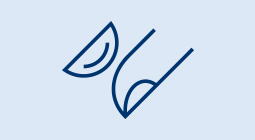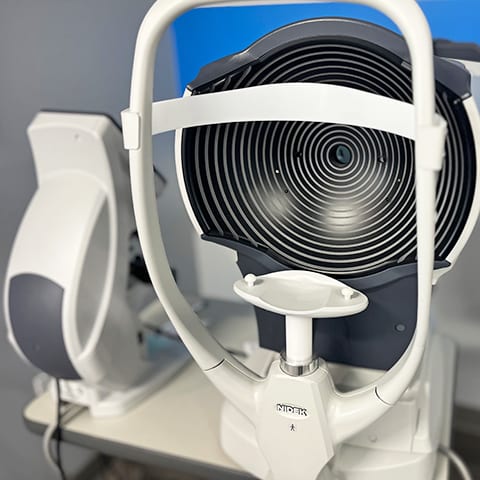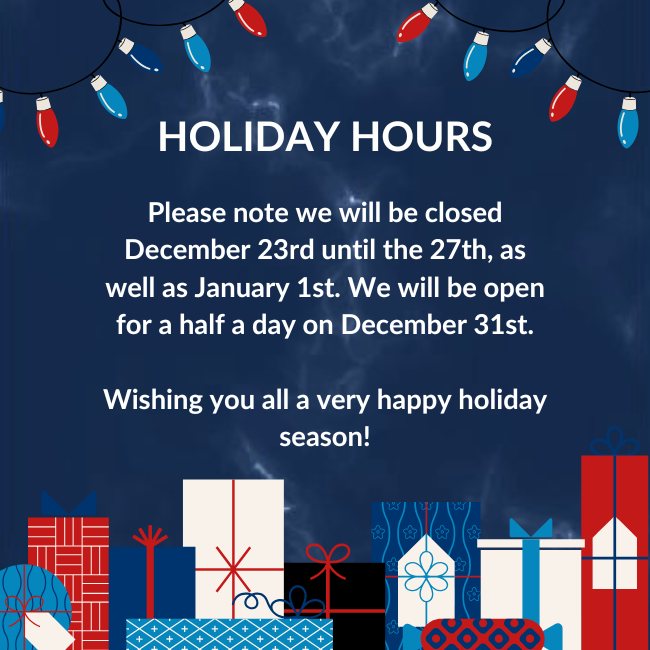Addressing Dry Eye Early
If you’re dealing with dry eye symptoms like blurry vision, watery eyes, and general irritation, you’re not alone. Dry eye disease is a common condition that affects about 7% of the U.S. population. The good news is that our team can help you find relief.
Through dry eye screenings and treatment methods such as OptiLIGHT by Lumenis, punctal plugs, BlephEx, and more, we can treat the underlying cause of your dry eye symptoms.
Don’t let dry eyes derail your productivity—contact us to schedule your appointment and address dry eye early.
Book AppointmentUnderstanding Dry Eye
Dry eye can be caused by issues in your tear film. Your tear film consists of 3 layers:
- The oily outer layer
- The watery middle layer
- The inner mucus layer
When the glands that produce these elements of your tears are not functioning properly or become inflamed, dry eye can occur. Inflammation can also occur from meibomian gland dysfunction (MGD).
Meibomian Gland Dysfunction & Dry Eye
Meibomian gland dysfunction (MGD) is a common condition that affects the function of the meibomian glands, which are responsible for producing the oil layer of the tear film. When these glands become clogged or inflamed, they can’t produce enough oil to keep the tears from evaporating too quickly, leading to dry eye.
Symptoms of MGD can include dryness, grittiness, redness, and stinging sensations in the eyes. We offer meibomian gland expression and other treatment options to address MGD.
The Symptoms of Dry Eye
Common symptoms of dry eye syndrome can include:
- A stinging or gritty feeling in the eye
- Scratchy and uncomfortable eyes
- Fluctuating vision
- Eye redness
- A burning feeling or the feeling of something foreign in the eye
If you’re dealing with these symptoms, a comprehensive eye exam can help our team better understand your dry eye symptoms and recommend a treatment option.
Our Dry Eye Diagnostics
The diagnostic stage is a crucial aspect of our dry eye services. We offer a variety of different diagnostic tests, including meibography, non-invasive & conventional TBUT, TearLab, InflammaDry, and more.
Our dry eye screenings are a part of our eye exams, so our team can address your symptoms and get started on preparing your treatment options.
Meibography
Meibography is a noninvasive imaging technique that visualizes and assesses the health of the meibomian glands. Any dysfunction or structural changes in these glands can lead to a reduction in oil production, resulting in faster evaporation of tears and increased dry eye symptoms.
During a meibography, infrared imaging technology is used to capture detailed images of the eyelids, revealing the structure of the meibomian glands and providing a look at their health.
TearLab
If you’re experiencing dry eye symptoms, the TearLab Osmolarity System can help. With its objective and quantitative point-of-care testing, TearLab provides precise and predictive information about tear osmolarity.
What does tear osmolarity reveal? Abnormal osmolarity indicates a loss of homeostasis or instability of the tear film. This is crucial for assessing your eye health.
InflammaDry
InflammaDry is a dry eye testing tool designed to help patients get the relief they need. InflammaDry provides information about the underlying cause of your dry eye by detecting an enzyme in your tears.
This quick and accurate diagnostic test allows our team to identify inflammation on your eyes’ surface. By pinpointing the root cause of your dry eye, we can develop a personalized treatment plan tailored to your specific needs.
Schirmer’s Test
Schirmer’s test can provide information about the quantity of tears produced by your eyes. By measuring tear production, Schirmer’s Test helps us identify the severity of dry eye and develop a personalized treatment plan just for you.
Non-invasive & conventional TBUT
Tear break-up time (TBUT) testing measures the time it takes for the tear film on the ocular surface to break up. This test can be performed subjectively by a clinician or objectively using an automated device.
During this test, your eyes are examined to determine how quickly your tears evaporate, indicating the presence of dryness. We can diagnose and develop appropriate treatment plans by evaluating the time it takes for tears to break up on the eye’s surface.
Dyes & Staining
Dyes and staining techniques are commonly used to assess dry eye symptoms. Fluorescein and lissamine green dyes are two common types used to evaluate the health of the eye surface, including the cornea and conjunctiva.
These dyes are applied to the eyes so any damage or abnormalities on the eye can be seen through a slit lamp microscope.
Lipiview
LipiView captures images of your blinking and oil in tears. By capturing images of your blinking and the oil in your tears, LipiView provides more information for our team into whether your eyes are receiving the correct amount of oil and if you’re blinking normally.
When it comes to understanding your eye health and getting to the bottom of your dry eye symptoms, LipiView can help us get started on creating your personalized treatment plan.
Even More Information About Dry Eye
Dry eye is a condition where you don’t produce the correct balance of tears to nourish and lubricate your eyes. You need tears to maintain the health of your eye’s front surface and to be able to see clearly.
Tears spread across your eye’s front surface (cornea) every time you blink. The tears lubricate your eyes and help to:
- Wash away foreign particles in your eyes
- Decrease your risk of eye infection
- Keep your eyes’ surface clear and smooth
- Give you clear vision
At Great Lakes Optometry, we offer a number of treatment options to help you find relief.
Book AppointmentOur Dry Eye Treatment Options
Through the diagnostic stage and some face-to-face time with Dr. Choponis, we work with you to find the treatment option that suits your needs.
Your environment and other risk factors, such as exposure to dry air or wind, long-term contact lens wear, and digital eye strain, can increase the chances of dry eye development, and we take that all into account when determining which treatment is right for you.
OptiLIGHT by Lumenis
OptiLIGHT by Lumenis is a light-based, noninvasive treatment done in the area below the eyes to manage dry eye. The first and only IPL FDA-approved for dry eye management.
The treatment is safe, gentle, and is backed by more than 20 clinical studies.
OptiLIGHT uses precise pulses of light to reduce the inflammation that is typically associated with dry eye disease, improve tear break-up time, and increase meibomian gland functionality.
Punctal Plugs
Punctal plugs are small devices placed into tear ducts to block the drainage of tears, help keep your eyes moist, and stop your eyes from drying out too quickly.
Punctal plugs are a treatment method that can be effective in providing lasting relief from dry eye symptoms. Our team will work with you to determine whether punctal plugs are right for you.
BlephEx
BlephEx is an in-office procedure that treats inflammation of the eyelids to provide much-needed relief. This inflammation can be caused by meibomian gland dysfunction and clogged oil glands.
BlephEx helps clean the accumulated bacterial biofilm and plaque along the edge of your eyelids and eyelashes to help unclog oil glands. The procedure lasts around 6–8 minutes, and you may feel a slight tickling sensation during treatment.
TearCare
The TearCare system uses targeted heat therapy to treat evaporative dry eye (poor-quality tears). The warmth helps soothe inflammation and melt oils clogged in the meibomian glands (inside the eyelids). Improving oil flow helps restore tear quality, as the oily layer of tears is vital for moisture retention.
What sets TearCare apart is applicators that allow for natural blinking, supporting your comfort during the treatment.
iLux
iLux uses light-based heat that warms blocked glands to a safe temperature to help soften and release oils and express meibomian (oil) glands with MGD. It addresses the blockage and stasis of oil within the meibomian glands, helping restore their function.
iLux is safe and effective and can help our patients get their comfort back from dry eyes.
Dyes & Staining
Dyes and staining techniques are commonly used to assess dry eye symptoms. Fluorescein and lissamine green dyes are 2 common types used to evaluate the health of the eye surface, including the cornea and conjunctiva.
These dyes are applied to the eyes so any damage or abnormalities on the eye can be seen through a slit lamp microscope.
Meibomian Gland Expression
Meibomian gland expression is a noninvasive procedure that involves applying gentle pressure to the meibomian glands. Expressing the oil in your eyelids can help the quality and quantity of your tears improve, reducing dry eye symptoms such as irritation, fatigue, and watery eyes.
Medicated Eye Drops
Medicated eye drops such as RESTASIS may be an effective treatment option to relieve your dry eye discomfort.
RESTASIS eye drops contain an active ingredient that can help reduce inflammation and increase the eye’s natural ability to produce tears. This can be an effective treatment option to relieve discomfort related to dry eye.
Dry Eye Education Resources
Great Lakes Optometry is committed to helping you understand and manage dry eye symptoms with confidence. We’ve compiled essential resources to help you understand this common condition and learn about the advanced treatment options available.
We encourage you to download the following informative guides:
We invite you to explore these resources at your convenience. If you have any questions or would like to schedule a dry eye assessment, please don’t hesitate to contact us.
Rehydrate & Regain Your Comfort
Your comfort is always a priority, and we want to help preserve that. Dry eye can settle in at any point, so our team is always ready to provide diagnostic testing and a variety of treatment options focused on helping you find relief.
If you’re dealing with dry eye, don’t hesitate to contact us and schedule your appointment today.
Book AppointmentFrequently Asked Questions About Dry Eye
What is dry eye?
Dry eye occurs when your eyes don’t produce enough tears or when the tears evaporate too quickly, leading to irritation, discomfort, and potential damage to the surface of the eye.
What are the common symptoms of dry eye?
Common symptoms include:
- A gritty or sandy feeling in the eyes
- Burning or stinging
- Redness
- Blurry vision
- Sensitivity to light
- Difficulty wearing contact lenses
What causes dry eye?
Dry eye can be caused by:
- Aging, especially after 50
- Environmental factors (wind, smoke, dry air)
- Certain medications (e.g., antihistamines, decongestants)
- Medical conditions (e.g., diabetes, rheumatoid arthritis)
- Hormonal changes (e.g., pregnancy, menopause)
- Prolonged screen time or reading
- Eye surgeries (e.g., LASIK)
How is dry eye diagnosed?
An eye doctor (ophthalmologist or optometrist) will perform tests, including:
- A slit-lamp examination
- Tear break-up time test
- Schirmer’s test to measure tear production
How is dry eye treated?
Treatment depends on the severity and cause of dry eye and may include:
- Over-the-counter artificial tears or lubricating eye drops
- Prescription medications (e.g., Restasis or Xiidra)
- Punctal plugs to block tear drainage
- Lifestyle changes (e.g., taking breaks from screens, using a humidifier)
- Warm compresses or eyelid hygiene
Can dry eye be prevented?
While some causes of dry eye can’t be prevented, you can manage symptoms by:
- Staying hydrated
- Taking breaks from screen time (the 20-20-20 rule)
- Avoiding smoking or secondhand smoke
- Using a humidifier at home or work
- Wearing sunglasses to protect your eyes from the wind and the sun
When should I see a doctor for dry eye?
You should see a doctor if:
- Symptoms persist despite using over-the-counter treatments
- You experience pain, light sensitivity, or blurred vision
- Your symptoms interfere with daily activities
Can dry eye lead to other complications?
If untreated, dry eye can cause chronic irritation, inflammation, and potential damage to the cornea, leading to vision problems. It’s important to manage symptoms to avoid long-term damage.
Are there natural remedies for dry eye?
Some natural remedies may help manage mild dry eye symptoms, including:
- Omega-3 fatty acids (from foods like fish or supplements)
- Aloe vera gel applied to eyelids (with caution)
- Drinking plenty of water to stay hydrated
- Using a warm compress on the eyes
Can dry eye affect contact lens wearers?
Yes, dry eye is common in contact lens wearers, as lenses can cause irritation or dry out the eyes. Consider switching to different types of lenses or using lubricating drops designed for contact lens users.
Our Location
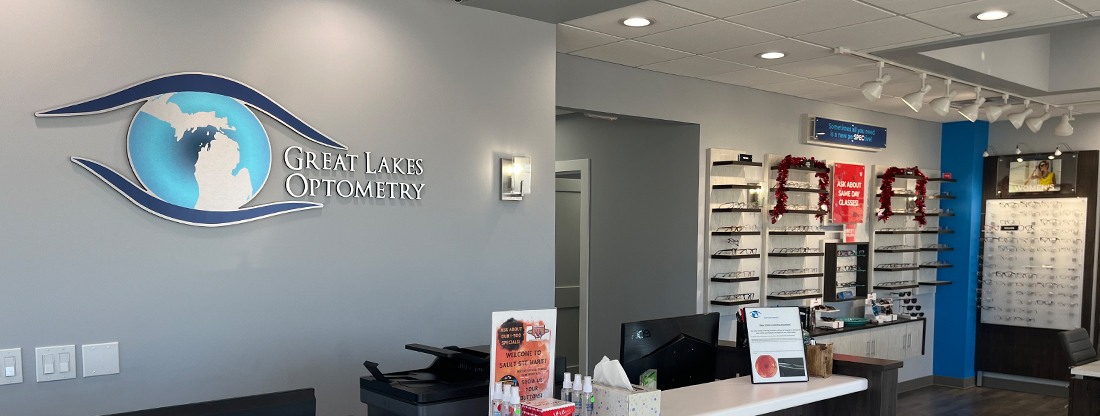
Our Address
- 2237 Ashmun Street
- Sault Ste. Marie, MI 49783
Contact Information
- Phone: 906-635-9600
- Fax: 906-635-1077
- Email: [email protected]
Our Hours
Hours
- Monday: 8:00 AM – 5:00 PM
- Tuesday: 8:00 AM – 5:00 PM
- Wednesday: 8:00 AM – 5:00 PM
- Thursday: 8:00 AM – 5:00 PM
- Friday: 8:00 AM – 4:00 PM
- Saturday: Closed
- Sunday: Closed
Our Brands










